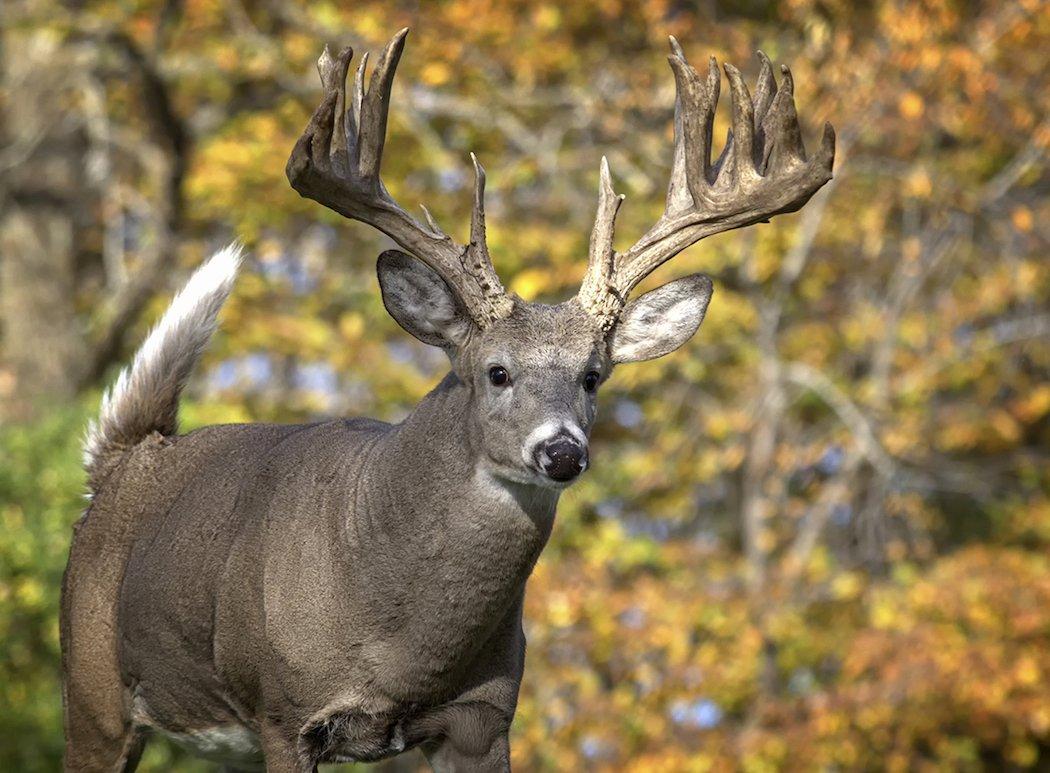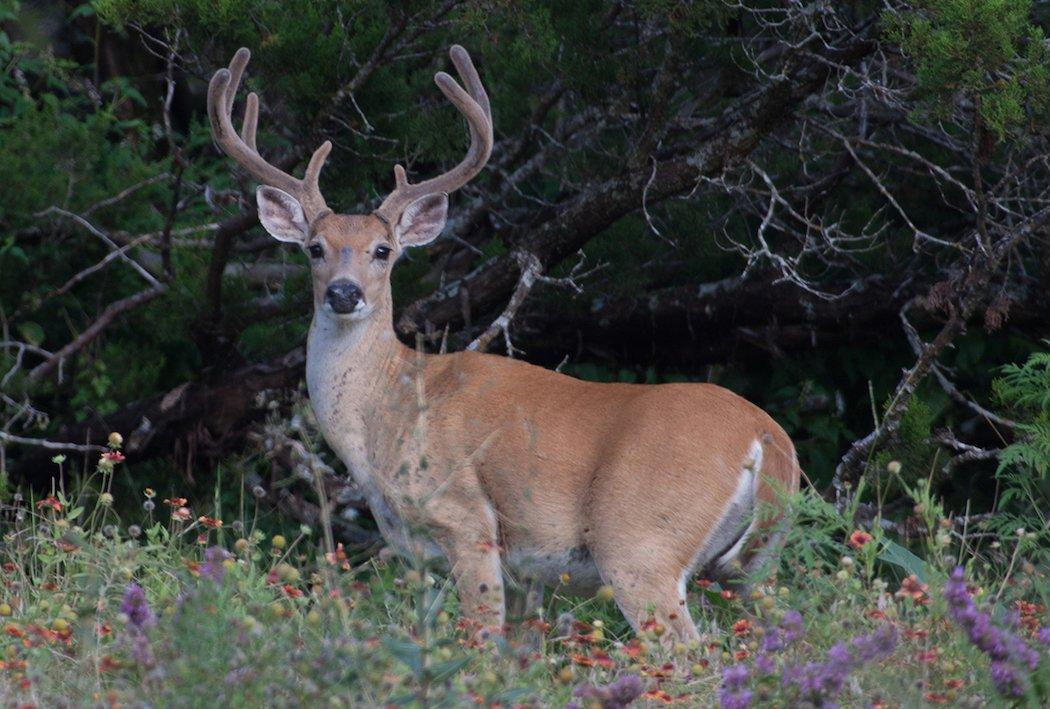Here's Your Day-by-Day Plan
A wave of wind ripples through the green soybean field. The beginning of deer season is right behind it. You want to kill a buck right out of the gate. Here's how to do it.
Hold for the Right Weather
Weather is very important. Good weather is a must-have. A single day with great conditions beats a week with bad conditions. So make sure you pick the right five days to hunt.
Cold Fronts: A stout cold front will help your odds.
Warm Fronts: A warm-up on the backside of a serious cold streak can be productive.
Moon Phase: There might not be much to it. But you might as well try to avoid the full moon.
Moon Overhead/Underfoot: Deer activity peaks at two points each day. Hunt the right days.
Precipitation: A steady rain often gets deer on their feet early.
Barometric Pressure: The best window is right around that 30.00 mark.
Wind Speed: Deer prefer low to moderate wind speeds.
Day 1
It may seem like a bad decision to spend time scouting. But it's much better to spend one or two days scouting, instead of hunting in a bad spot for five.

The early season is driven by food. Plain and simple. So your first scouting assignment is to find it. Bucks will likely be in big bachelor groups this time of year. And they'll be around food sources such as soybeans and mast.
In the North and Midwest, early season food means corn, soybeans, and milo as well as mast. Down South and in the East, crops and mast are still good, but also look for clover, alfalfa and mast.
Finding the food is the first step. Studying the terrain is the second. Begin with aerial images and topography maps. You need to know where deer are bedding. Places of interest during the early season are generally less secure than during the rut and post-rut. They aren't on high alert. This is something you can take advantage of. But don't slip up, or you'll educate the deer you're hunting. Then all bets are off. You have to start from scratch.
You've narrowed down likely feeding destinations and bedding areas. Now, get to the woods and verify. Start in the mid-morning hours (to allow deer to get back to their beds) on foot by scouting food sources and trails for fresh sign. It's not uncommon to find fresh rubs and scrapes at this time. They'll show up more as bucks rub the velvet off. When you find the sign you're after, hang cameras so they can monitor activity going into the evening hours. Set the camera so that it takes photos every so often, even if deer don't trigger the sensor. This will help capture photos of deer not within that 50- to 60-feet range.
Then, based on your findings from the field, hang an observation stand and hunt that first afternoon. Don't get too close. Get just close enough that you might get a shot, but far enough away that you can watch a large area. This will help you determine where to hunt the rest of the trip. Also, I prefer to allow my camera to monitor areas that I'm not watching that first afternoon. This increases your chances of pinning down a deer you want to hunt.
Day 2
Day two will likely bring déjà vu. You might see deer that first evening, and your trail camera SD cards might have maxed out in the first 24 hours. But you might not have pegged a deer you want to shoot. Don't worry if you didn't. Repeat your efforts from day one.
If you aren't finding deer anywhere, it's possible that hunters have already pressured deer enough that they're seeking better cover. Find sanctuary or refuge areas that are harder to get to. Swamps, brush piles, drainages, fencerows and other places yield great bedding cover. Check these places for fresh sign. Remember, most mature bucks have four-finger-wide tracks. And the area should be littered with rubs if they've shed velvet. Regardless, hang a camera if it looks good and set up another observation stand.
If you found the deer you're after, it's time to make a plan. If the weather conditions are right, you could be in the money. If you're confident you know exactly how to kill the deer that you either have on trail camera or sighted in person, by all means, move in for the kill. If you are hesitant, stay in an observation stand for one more hunt. Just hang it a little closer to where the deer is emerging so you have somewhat of a chance of killing the deer if it slips up.
Day 3
Hopefully you've laid eyes on the deer you want to hunt by now. If you haven't found the right buck, hunt the best looking sign you can find and stay after it. Keep those cameras out, too. Check them after the evening hunt.
Don't get discouraged if you haven't filled a tag yet. I've noticed a pattern in my personal hunting experiences. I killed several of my top-scoring bucks by hunting the same stand three or more days in a row. Granted, I'm not encouraging stand burnout. But a buck isn't going to do the exact same thing every day, so how can it hurt to be there when it's not?
Don't forget to incorporate water into your game plan. If it's hot, deer will be spending even more time near water. Use that to your advantage.
Day 4
The clock is winding down, but now isn't the time to lose focus. Stay on track. Continue with low impact entry and exit routes. By day four, I tend to push it a little harder and get closer to bedding areas or places I've seen deer coming out.
Afternoons are better right now during the early season, but hunt mornings, too. Just make sure you continue to avoid food sources during your morning sits. Every second counts on short hunts. Be in a tree. Hunting closer to bedding areas during morning hunts is the key. Just make sure your entry routes keep you away from food sources and your exit routes take you away from bedding areas.
Day 5
This is it. The last hoorah. Hopefully by now you've collected enough intel that you can move right in on a big deer and kill that big son of a buck (pun intended). If deer aren't reaching the food sources of until dark — which is probably the case if you haven't seen any big boys in person yet — move closer to the bedding area. You're taking a risk. But it's your best bet on the last day.
Many studies — and plenty of my own trail camera photos — suggest bucks frequently move around lunchtime. So pack a lunch and stay a little later in your morning stand location. If you haven't seen anything by early afternoon, pull out and head to your afternoon perch. It's the last sit. So get as close to those bedded deer as you dare.
Then, if you haven't tagged out already, watch as that big boy steps out during the final hour of the hunt. Draw that bow back. And launch one through both lungs.
And if the top-heavy 10-point you've been eyeballing on camera all week doesn't show, eh, it was a good time hunting him. Better luck next time.
It is deer hunting after all. Not deer killing.
Check out the author's plan for killing a late-season stud in five days.
Click here for more deer hunting articles and videos.
Check us out on Facebook.








